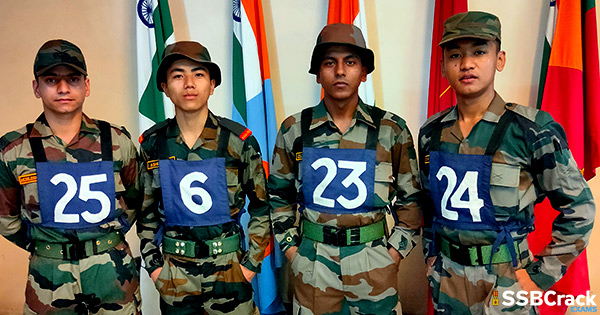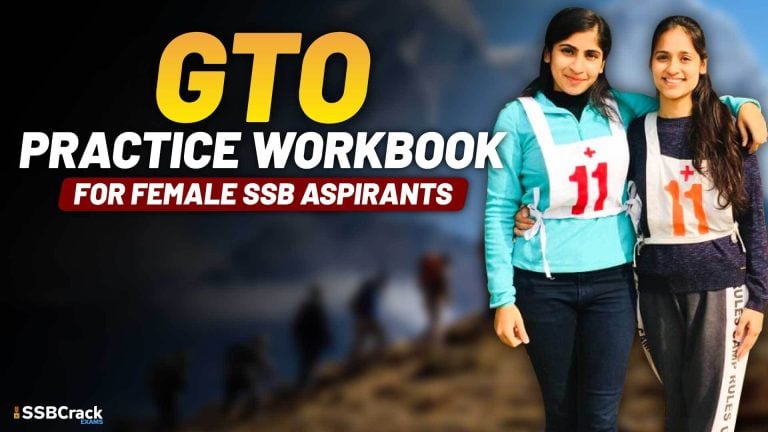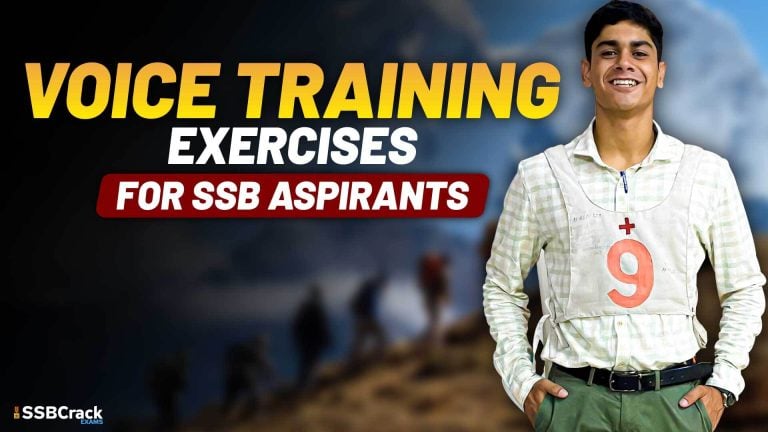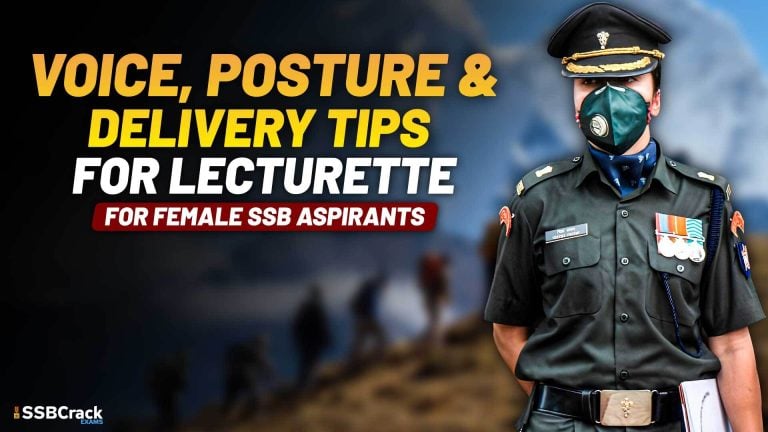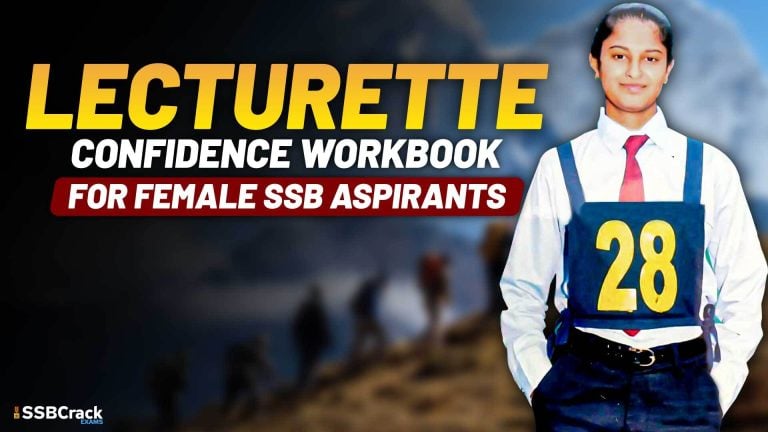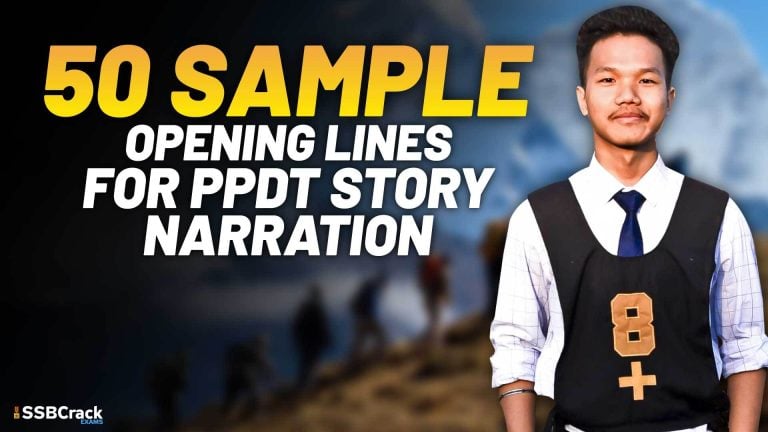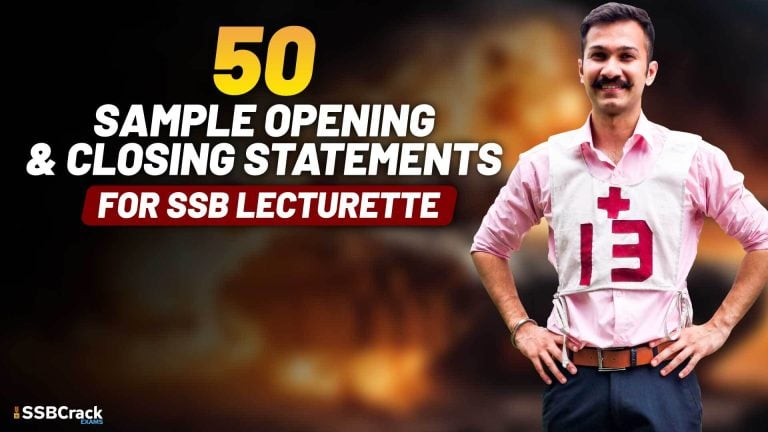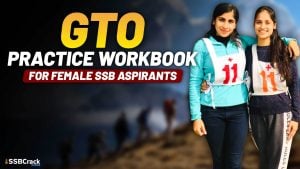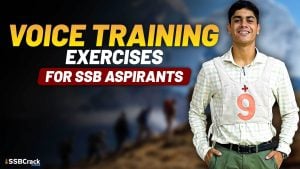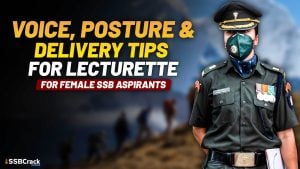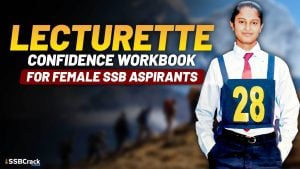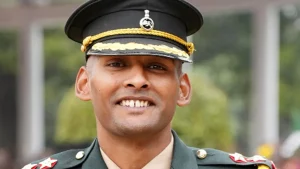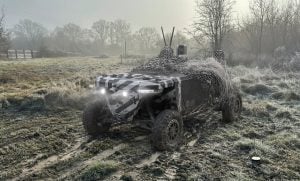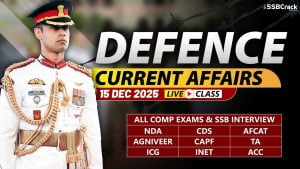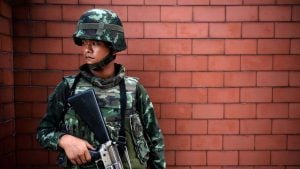Armed forces offer a very exciting career to young men and women in several fields. A career in the forces, in addition as a career, is also an adventure in itself. To ensure that appropriate candidates are chosen, a comprehensive selection process is adopted by the armed forces through the Service Selection Board (SSB) interview. This system of selection is based on the trait theory of leadership which assumes that every leader must have some specific and pre-determined leadership traits.
It also presumes that such traits can be acquired by a candidate with the passage of time meaning thereby that a person once rejected in an SSB interview is likely to succeed if he acquires some of the traits with the passage of time. The present system of selection, although is long and takes four to five days, is thus based on an objective assessment of each candidate in which the qualities like initiative, alertness, judgement, courage, physical fitness endurance, cooperation, group planning, decisiveness, knowledge, etc. are judged.
In addition, psychological and mental robustness of the candidate vis-a-vis requirements of the Armed Forces is judged and finally, an overall assessment of the personality of a candidate is made by way of an exhaustive personal interview.
Service Selection Boards
For Army
Selection Centre East (SCE) (Uttar Pradesh)
Allahabad: 11 SSB, 14 SSB, 18 SSB, 19 SSB, 34 SSB
Selection Center Central (SCC) Bhopal: (Madhya Pradesh)
Bhopal: 20 SSB, 21 SSB, 22 SSB
Selection Center South (SCS) Bangalore: (Karnataka)
Bengaluru: 12 SSB, 17 SSB, 24 SSB
Selection Center North (SCN) Kapurthala: (Punjab)
Kapurthala: 31 SSB, 32 SSB
For Air Force
Dehradun: 1 AFSB
Mysore: 2 AFSB
Varanasi: 3 AFSB
Gandhinagar: 4 AFSB
Kanchrapara: 5 AFSB
For Navy
Bengaluru: 12 SSB
Bhopal: 33 SSB
Coimbatore: NSB Agrani
Facilities For Candidates By SSB
• Pick-up and Drop from reporting Railway Station.
• Furnished accommodation.
• Messing.
• Medical facilities.
• Game, Magazines and Newspapers
These all along with some other facilities for candidates to ensure that they feel at home.
Day Zero (Reporting Day)
Candidates are picked by the representative of the SSB and are accommodated in the board area, where they are divided into groups of 8-10. Each individual is there chest numbers which are given by the board. They have to wear it throughout there SSB secession. After chest numbers allotment they all have to fill PIQ (Personal Information Questionnaire) forms. These forms are later used by SSB for assessment of candidates. At the end of all this opening address is given by the president of the SSB or any other officer.
Day One (Screening Test)
Actual SSB testing for the candidates starts from this day onwards. Candidates have to go through Intelligence & PPDT tests. An Intelligence test is basically a test of reasoning which is of Verbal and Non-Verbal types. A PPDT(Picture Perception & Discussion Test) in which you have to write a story on an image within four minutes, image slide shows only for 30 seconds and image slide is always hazy and unclear.
A rectangle is printed on the paper on which you have to write your story. Later you are divided into 12-15 candidates group and advised to sit in a semi-circle where each candidate is asked to tell his/her story chest number wise. Now all candidates have advised to discuss their stories and find out a common story where the entire individual must present their view as common as much as possible. Result of this test is making available within 1 or 2 hours.
Day Two (Psychology Test)
On the second day, only those are allowed to undergo through four different tests who are already clear their first stage i.e. Screening test. Here pay your attention if you fail to pass screening test than you are sending back no further assessment by SSB.
Four different tests are as follows:
Thematic Apperception Test (TAT)
Word Association Test (WAT)
Situation Reaction Test (SRT)
Self-Description Test (SD)
In TAT you have to write 12 stories in total based on 12 picture slides. This time 11slides which have a picture (not blank) are not hazy and the twelfth slide which is always blank. All these slides are shown for less than one minute and they are expected to write a story based on this slide separately within four minutes or sometimes less than this.
Word Association Test is an attempt to concur the candidate’s psychological make-up based on their responses for different words of word slides as shown by a Board officer. There are 60 such slides shown by the Board Officer and you have only 15 seconds after that present slide is flipped and the next slide has appeared. So you have only 15 seconds to read, understand and make a meaningful sentence.
In SRT You have now 60 multiple questions to solve within 30 minutes. Basically in SRT none of the options is either right or wrong. They have differently weighted in the degree of correctness. So you have to choose that suited best in that situation as action according to you.
At last, candidates have to go through the SD test. It held after 10-15 minutes gap of SRT. Here everyone has 15 minutes to write about himself/herself. But not only what you think about yourself and what your strength and weakness, but you also have to mention the views/thought of different persons about your strength/weakness. The persons are your Parents, Teachers, Friends and others. You are also asked to write what qualities you want to develop etc.
Interview
The interview testing of the candidates takes places one by one and sometimes simultaneously by multiple interviewers. It is conducted after the normal testing hours of GTO and Psychology and usually lasts up to 30 minutes.
Day Three & Four (GTO Tasks)
Next two day tasks are usually called GTO test. This test has the following test:
Group Discussion (GD)
Group Planning Exercise
Progressive Group Tasks (PGT)
Half Group Tasks (HGT)
Individual Obstacles
Group Obstacles Race or Snake Race (GOR)
Command Task (CT)
Lecturette
Final Group Task (FGT)
Group Discussion (GD)
For GD candidates are required to sit according to their chest number in a semi-circle. Group strength may be of 8-10. Now GTO who takes his seat behind the group announced two topics, its group turn to select one and inform for the same to the GTO. GD will be carried out for 10-15 minutes. GTO may ask for the conclusion or may not, for this as he announced it in the starting of GD. Now GTO will give second GD topic to the group, here this topic is compulsory, that means the group has no choice. This GD will also go as earlier one. In GD candidates are always advised to put there point & support others where ever possible by adding supporting statement.
Group Planning Exercise
This is a group and individual task by nature. In this, a real-life problem is narrated on the sheet and 2-3 problem related to that is given. The GTO explain a sketch for which Narrate paper is written materiel given to each candidate. After an explanation from GTO, every individual has to write down his or her plan of action. After this GTO gave 10 minutes to the group for the group plan of action & which is explained by the group leader to the GTO after that time spam.
Progressive Group Tasks
This is the third test in GTO test series which held outdoors in which total 4 obstacles have to cross. Group has a total of 40 minutes to perform this task. As the group moves further from one obstacle to other obstacles that become difficult as they are spread on the ground by their length. It has a starting and finishing line. For this task you have some rules like which material and structure is touchable or not touchable is explained by GTO. Its perform in multiple levels.
Group Obstacles Race or Snake Race
It’s a type of race competition in which a total of six obstacles has to cross by every group. This is not flat in nature and groups have to carry a load that called snake that’s the reason this is called Snake race. Time is the concern of this race. Every group has to perform these obstacles at the same time.
Half Group Task
In this, the former group is divided into two and instructed by the GTO to perform the obstacle. While one is performing the second group sends back to the waiting room. Usually, only one task has to perform by the group. Allowed time is 10-15 minutes. GTO provides the group with those materials that will help the group to make the task done.
Lecturette
Lecturette is of duration for 6 min for every individual. First three minutes for preparation and the next 3 minutes for delivering it. It is conducted outdoor where candidates are sitting in 2-3 rows and goes one by one to pick his card, prepare the lecturette and deliver it. First of all the candidates goes to GTO where he or she chooses one card. On these cards there are four topics are written. Candidates have to choose one and prepare the same. To make the speaker updated about time GTO bells two times. First, he bells for warning that he or she has 30 seconds left to conclude lecturette. After 3 minutes two continues bell is made to indicate time up.
Individual Obstacles
Every candidate has to perform it individually. Total allowed time is 3 minutes and you have to cross a total of 10 obstacles. Mark for every obstacle is different. They are in ascending or progressive order, as much as one goes further the obstacles becomes more difficult. These obstacles carry a total of 55 marks. Obstacles starting from first carry 1 mark second carry 2marks and so on up to tenth obstacles, which carry the maximum marks.
Command Task
This task has to be completed by the three-member of the group. One acted as commander and rest two have to perform the obstacles as commanded by the commander. The obstacle is explained by GTO only to the commander. Every member of the group has to play commander role turn by turn. Total allowed time is 10-15 minutes.
Final Group Task
As the name suggests it’s the final outdoor task and perform in a group. Allowed time is 10-20 minutes. Procure of execution is same as PGT, the difference is that it has only one stage but the size of the task may be bigger.
Day Five (Conference)
It’s the last day of candidates at the SSB. Every candidate goes to board meeting one by one. Here they may ask about the likes or dislikes about SSB arrangement. They are also asked for suggestions and about their local visit. What do they like there? Etc. After the board meeting with every candidate is over the final result is declared within half an hour. Now recommended candidates are required to say back for their medical examination in the military hospital or at a different place. Rest are dropped at Railway station.
You can prepare for defence entrance exams such as NDA, AFCAT, INET, and CDS by taking Written Online courses as they will not only give you access to full-length quality lectures but will also provide the facility to take standardized mock tests for better study and strategic growth in the exam. You can take multiple quizzes after each lesson to ensure the full understanding of the subject along with creating your customized lesson plans. You can check out the course content along with other important specifics at SSBCrackExams.
You can also access them through the SSBCrackExams app available in the google play store. Jai Hind
